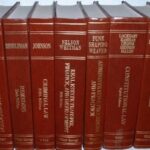This discussion will focus on a general overview of evidence used in the courts of law. The Federal government has what is known as the Federal Rules of Evidence manual that is mandatory in all federal cases. That includes both civil and criminal proceedings. Many states also have rules of evidence that are very similar to the federal governments. For the remainder of this discussion we shall focus on only the Federal Rules of Evidence.
Many types f evidence exist. But first, I believe it is necessary to remind everyone of direct and indirect evidence. “Direct evidence is evidence that proves a fact or proposition directly, rather that by secondary deduction or inference” (Nemeth, 2001). Eyewitness testimony and a defendant’s confession are both “direct” evidence. Indirect (a.k.a. circumstantial) evidence is a fact that can be used to infer another fact. Circumstantial evidence includes body fluids, fibers, and expert witnesses. For example, a woman is found dead at her home with a fiber on her shirt. Eventually, the fiber can lead to the killer.
As stated above, many types of evidence exist. Judicially noticed evidence is usually automatically admitted and does not require the rigorous procedure requirements. That type of evidence is basically like common knowledge or an indisputable fact, for example there are 24 hours in a day. Witnesses, physical, direct, indirect, testimony, expert testimony and opinions, documents and hearsay are other types of evidence. Although the evidence is needed to prove the innocence or guilt of a defendant, evidence must first go through certain processes before it can be used. Therefore, we will continue now with the “rules” of evidence.
Before any evidence is admitted it must be relevant. Relevant evidence means having any tendency to make the existence of any fact that is of consequence to the determination of the action more probable or less probable than it would be without the evidence (www.law.cornell.edu). Although the evidence is relevant and material, it may not end up in a court room due to the prejudicial nature of it. If it makes the defendant look terrible for another crime he committed ten years ago, the judge does not have to allow the evidence in the current trial.
The Federal Rules of Evidence also covers witnesses, testimony, hearsay, as well as the many exceptions to the hearsay rule. Any witness must be and have personal knowledge of the matter at hand to testify. The witness may be an expert or someone with the knowledge of the subject matter. Some witnesses are allowed to give their opinions (medical examiners) and others are not. Finally, the hearsay rule in my opinion is the most complicated. Actually, the rule itself is rather simple, but the exceptions are complex. “Hearsay is a statement, other than the one made by the declarant while testifying at the trial or hearing, offered in evidence to prove the truth of the matter asserted” (www.law.cornell.edu). That statement is rather simple and can be understood, unfortunately to many exceptions exist to cover all of them. Most everyone knows that a spouse can not testify against their spouse (with exceptions), a psychologist can not testify against a patient, and a Priest can not testify against a person for their confessions of sins.
Now that the basics of evidence are out of the way, we will discuss a particular case. Money laundering is occurring within a community by members of organized crime. We are all working diligently to bring them down. I believe many evidence issues will arise when the trial starts. The first issue will be the relevancy of the evidence.
The circumstantial evidence will be a problem for the prosecution because of the fact that a lot of the evidence will be from computers and phone taps. Basically, the electronic data will be put through a rigorous process of admissibility. The last major issue I believe will occur will be hearsay. That as well as the electronic evidence will cause the majority of the problems.
Nemeth, C.P., 2001. Law and Evidence: A Primer for Criminal Justice, Criminology, Law, and Legal Studies. Prentice-Hall, Inc., Upper Saddle River, New Jersey 07458.
Cornell Law School: Legal Information Institute, 2006. Federal Rules of Evidence. Retrieved August 18, 2006 from http://www.law.cornell.edu/rules/fre/rules/.htm#Rule101


